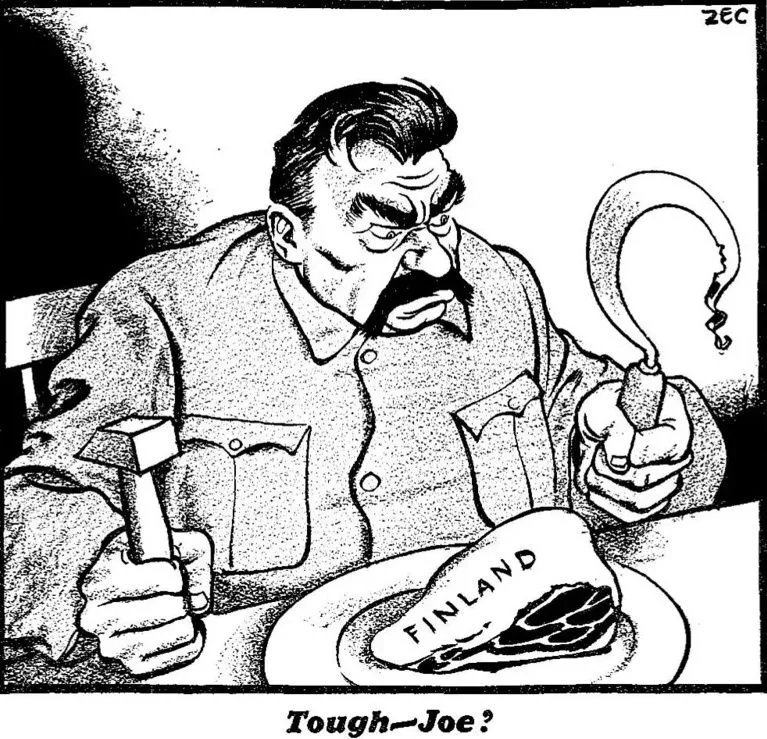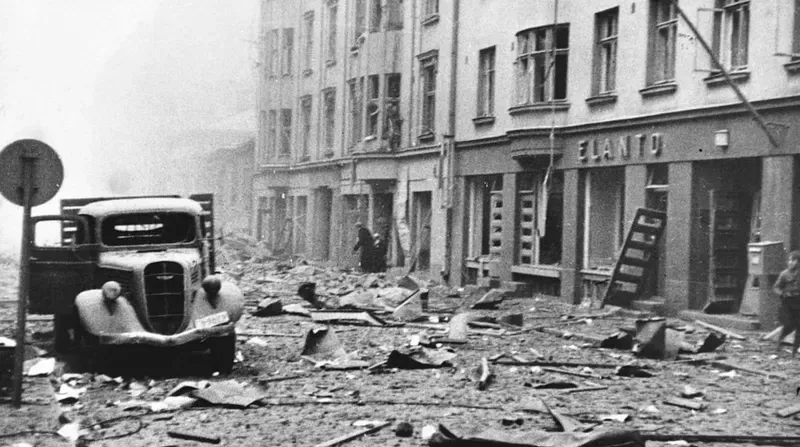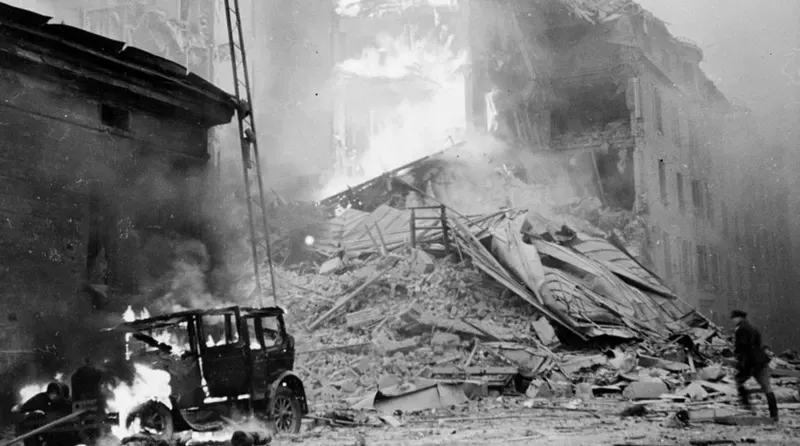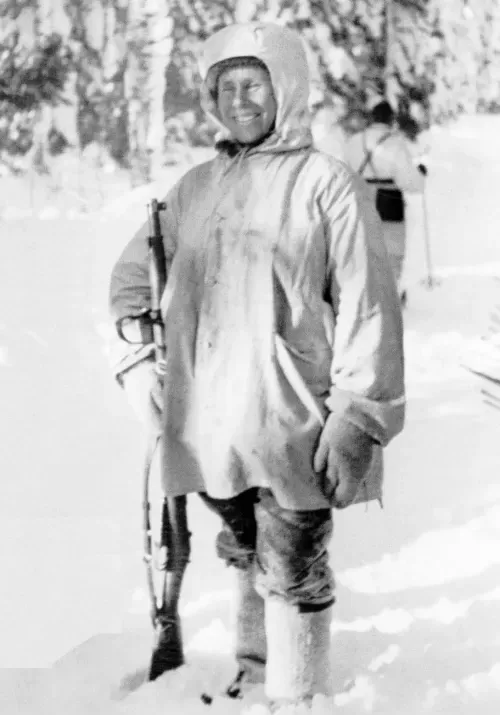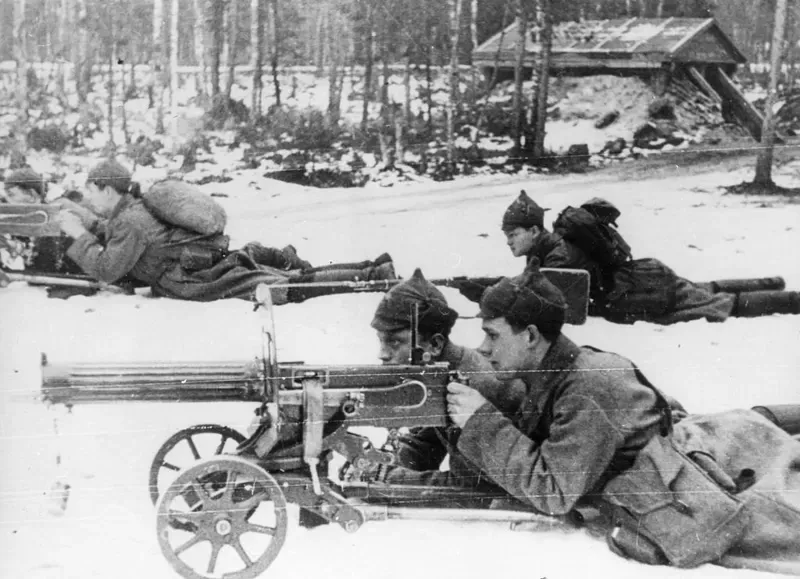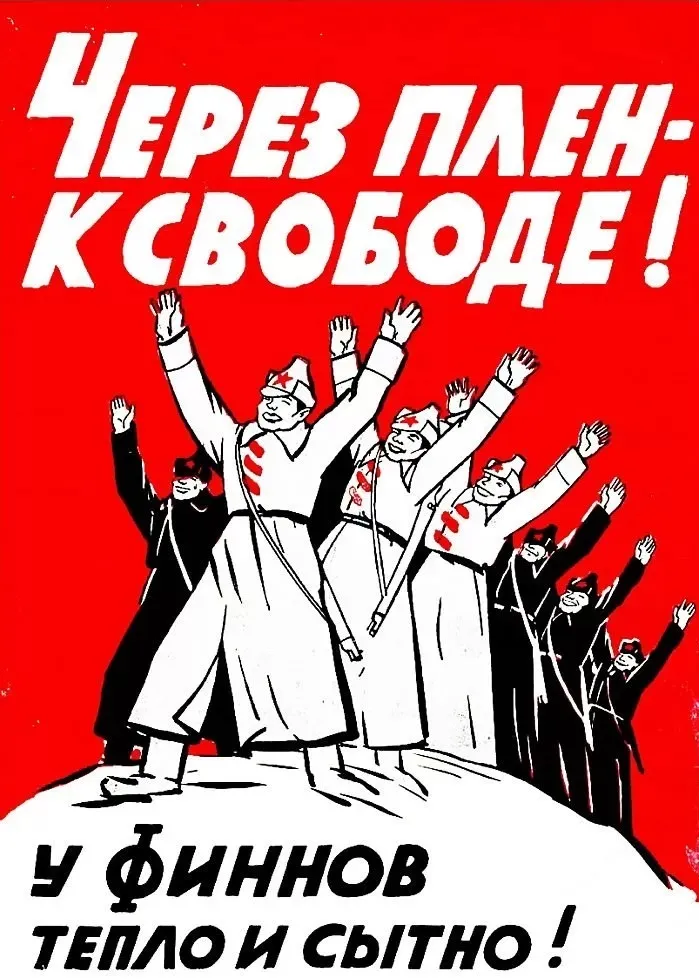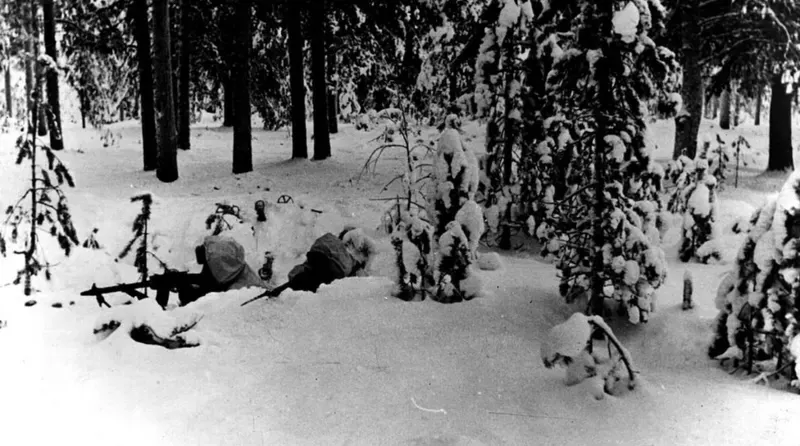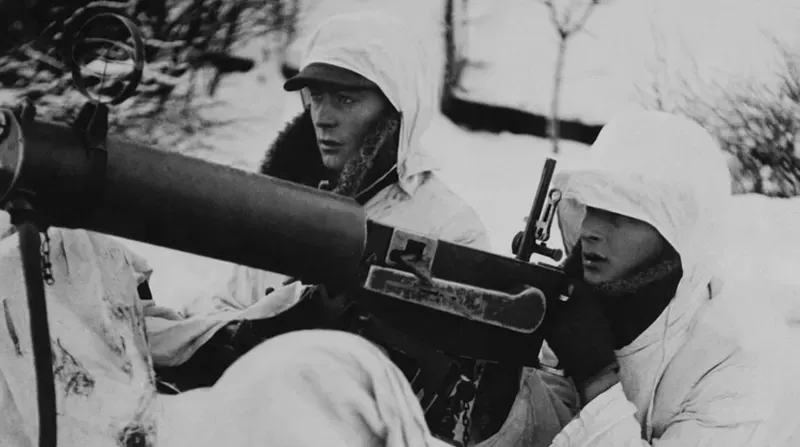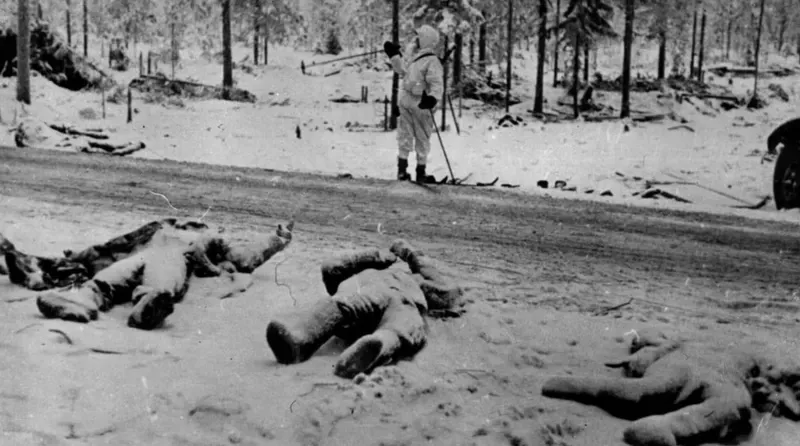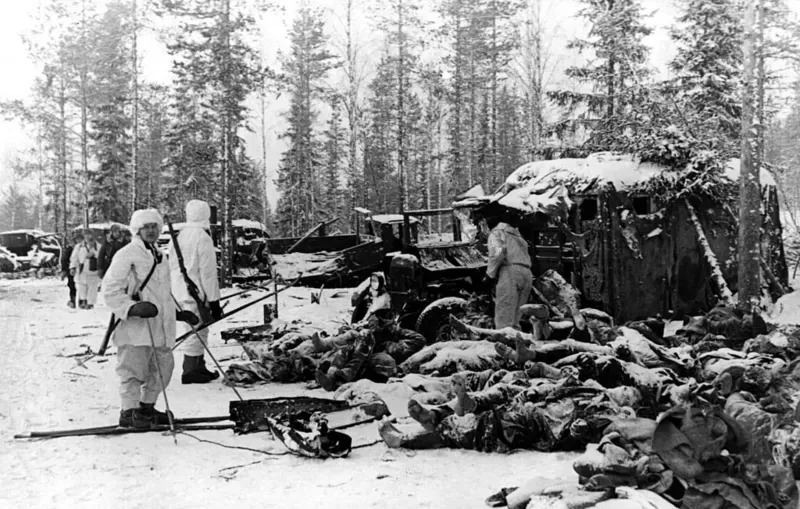Я впевнений, що всі українці хочуть швидкої перемоги і це дуже справедливе бажання. А тому, переживають за те, щоб під час зими та різкого похолодання не зупинився контрнаступ ЗСУ та було продовжено звільнення територій від рашистських загарбників.
Я вирішив проаналізувати зимову Фінську війну 1939 -1940 років, щоб зрозуміти, як в аналогічних обставинах діяли фіни і , що допомогло їм успішно протистояти агресії з боку СРСР. Як маленька держава з населенням у 3,7 млн змогла зупинити наступ гіганта з населенням понад 170 млн, який мав величезні військові та матеріальні ресурси?
Виявляється, що в Фінській та російсько-українській війнах є багато чого схожого. Сама головне – один і той же ворог- росія.
Друга схожість в тому, що росія сама провокує конфлікти, створюючи на територіях інших країн фейкові квазі- республіки, щоб надалі ніби під виглядом їхнього захисту захоплювати чужі території. Так було з фінами, так відбувалось і в Україні.
Також у всі часи, виправдовували свої агресивні дій перед західними країнами суцільною брехнею, перекручуванням фактів. Чого варта одна лише цинічна заява міністра закордонних справ СРСР про те, що вони не бомбили Гельсінкі, а скидали хліб з літаків, щоб допомогти голодним фінам.
I am sure that all Ukrainians want a quick victory and this is a very fair wish. And therefore, they worry that during the winter and the sharp cooling, the counteroffensive of the Armed Forces will not stop and the liberation of the territories from the racist invaders will continue.
I decided to analyze the Finnish winter war of 1939-1940 in order to understand how the Finns acted in similar circumstances and what helped them to successfully resist aggression from the USSR. How was a small state with a population of 3.7 million able to stop the advance of a giant with a population of more than 170 million, which had enormous military and material resources?
It turns out that the Finnish and Russian-Ukrainian wars have a lot in common. The most important thing is the same enemy - Russia.
The second similarity is that Russia itself provokes conflicts, creating fake quasi-republics on the territories of other countries, in order to seize foreign territories under the guise of their protection. This was the case with the Finns, and this is what happened in Ukraine.
Also, at all times, they justified their aggressive actions in front of Western countries with complete lies and distortion of facts. What is the value of the cynical statement of the Minister of Foreign Affairs of the USSR that they did not bomb Helsinki, but dropped bread from airplanes to help the hungry Finns.
Намагаючись посунути кордон від Ленінграда та створити у країні маріонетковий прорадянський уряд, 30 листопада 1939 року Радянський Союз напав на Фінляндію.
Радянські воєначальники планували завершити війну за 20 днів і провести парад у Гельсінкі 21 грудня , зробивши подарунок Йосипу Сталіну на день народження. Дуже амбітні плани, майже як взяти Київ за 3 дні.
Trying to move the border from Leningrad and create a puppet pro-Soviet government in the country, on November 30, 1939, the Soviet Union attacked Finland.
Soviet military commanders planned to end the war in 20 days and hold a parade in Helsinki on December 21, giving Joseph Stalin a birthday present. Very ambitious plans, almost like taking Kyiv in 3 days.
Проте військова кампанія у Фінляндії стала для Червоної армії ганебною.
Великі площі лісів у довоєнний час сприяли економічному процвітанню Фінляндії, яка стала одним з провідних експортерів паперу на світовому ринку. Але керівництво країни не достатньо уваги приділяло обороні країни.
Фактично, у Фінляндії виконувалася теза лідера соціал-демократів Вяйне Таннера : "Перш ніж витрачати величезні гроші на оборону, потрібно створити для людей такий рівень життя, який вони захочуть захищати".
Війна між СРСР та Фінляндією почалася після інциденту в Майніла 26 листопада - артилерійського обстрілу прикордонного радянського села, внаслідок якого загинули, за твердженнями Москви, четверо радянських військових. СРСР звинуватив в обстрілі фінів.
Ні люди в Фінляндії, ні західні держави не повірили в цю версію подій.
"Ніхто не вірить, що Фінляндія обстріляла радянську територію. Дії Радянського союзу вважають жалюгідною провокацією. Багато робітників кажуть, що якщо СРСР сподівається ввести нас, фінів, в оману своїми заявами, це не пройде. Тому у випадку нападу на Фінляндію краще організувати для москалів гарячий прийом без всякого жалю"*, -такі думки були у середовищі робітників.
Вже вранці 30 листопада радянські бомбардувальники скидали бомби на фінські міста, а сухопутні війська розпочали вторгнення.
Варварські бомбардування фінських міст радянською авіацією, внаслідок яких загинуло кілька сотень цивільних, та загарбницькі вимоги СРСР чітко визначили для фінів та більшості країн світу цю війну як справедливу оборону від агресора.
Фіни знали, що їх чекає, якщо вони програють війну СРСР - повне підкорення. Вони відчували себе морально правими і були готові захищатися до останньої краплі крові.
"Ненависть до росіян розгорілася моментально і набула колосального масштабу. "Москальські мудрування" - так говорять у зв'язку з тим, що Молотов заперечує факт бомбардувань Гельсінкі та інших міст. Росія втратила своїх останніх прибічників тут", - зазначали в державній поліції Фінляндії.
Зимову війну фінські історики описують як момент найбільшої національної єдності.
However, the military campaign in Finland became shameful for the Red Army.
Large areas of forests in the pre-war period contributed to the economic prosperity of Finland, which became one of the leading exporters of paper on the world market. But the country's leadership did not pay enough attention to the country's defense.
In fact, in Finland, the thesis of the leader of the social democrats, Väjne Tanner, was fulfilled: "Before spending huge money on defense, it is necessary to create such a standard of living for people that they want to defend."
The war between the USSR and Finland began after the Maynila incident on November 26 - an artillery shelling of a Soviet border village, as a result of which, according to Moscow, four Soviet soldiers were killed. The USSR accused the Finns of shelling.
Neither people in Finland nor Western countries believed in this version of events.
"No one believes that Finland shelled Soviet territory. The actions of the Soviet Union are considered a deplorable provocation. Many workers say that if the USSR hopes to mislead us Finns with its statements, it will not succeed. Therefore, in the event of an attack on Finland, it is better to organize for the Muscovites a warm welcome without any regrets" - such thoughts were among the workers.
As early as the morning of November 30, Soviet bombers dropped bombs on Finnish cities, and ground troops began an invasion.
The barbaric bombing of Finnish cities by Soviet aircraft, which resulted in the deaths of several hundred civilians, and the invading demands of the USSR clearly defined this war for the Finns and most countries of the world as a just defense against the aggressor.
The Finns knew what awaited them if they lost the war to the USSR - complete subjugation. They felt morally right and were ready to defend themselves to the last drop of blood.
"Hatred for Russians flared up instantly and took on a colossal scale. "Moscow tricks" - that's what they say in connection with the fact that Molotov denies the fact of the bombing of Helsinki and other cities. Russia has lost its last supporters here," the Finnish state police said.
Finnish historians describe the Winter War as the moment of greatest national unity.
Головними факторами успішної оборони Фінляндії вважається не тільки патріотизм фінів, але й збіг надзвичайно суворої зими та важкого стану радянської армії, ослабленої сталінськими чистками.
Радянські військові часто не мали ані рукавиць, ані теплого одягу, необхідного для ведення бойових дій в умовах лютих морозів.
Через відсутність лижної підготовки , відсутність маскхалатів, частини дивізії рухалися повільно і являли собою абсолютно помітні цілі.
The main factors of the successful defense of Finland are considered not only the patriotism of the Finns, but also the coincidence of an extremely harsh winter and the difficult condition of the Soviet army, weakened by Stalin's purges.
Soviet soldiers often had neither gloves nor warm clothes, necessary for conducting combat operations in conditions of severe frosts.
Due to the lack of ski training, lack of masks, parts of the division moved slowly and were absolutely visible targets.
Звичайною справою для росіян під час війни була погана координація підрозділів, відсутність зв'язку між ними, вогонь по своїх, хаос у командуванні, затримка евакуації поранених, залишення боєприпасів без нагляду, відсутність палива для техніки та голодування військових.
Poor coordination of units, lack of communication between them, firing on their own, chaos in the command, delay in evacuating the wounded, leaving ammunition unattended, lack of fuel for equipment and starvation of the military were commonplace for the Russians during the war.
На відміну від радянських військових, фіни були тепло одягнені, мали в лісах купу схованок зброї та харчів, фінські мобільні загони мали білі маскхалати, які надавали можливість влаштовувати засідки. Вміння добре пересуватись на лижах надавало можливість маневрувати.
Фінські військові використали своє вміння швидко пересуватися на лижах у нападах невеликих мобільних загонів у тилу радянської армії.
Саме такий стан радянської армії зумовив величезну різницю у втратах.
У фінській армії загинули понад 26 тисяч військових і тисяча потрапила у полон, 43 тисячі були поранені.
Радянська армія втратила щонайменше понад 126 тисяч вбитими, померлими від поранень та зниклими, 264 тисячі отримали поранення. Чимало істориків вважають радянські втрати суттєво заниженими.
Unlike the Soviet military, the Finns were warmly dressed, had a lot of caches of weapons and food in the forests, Finnish mobile units had white masks, which made it possible to set up ambushes. The ability to move well on skis made it possible to maneuver.
The Finnish military used their ability to move quickly on skis in the attacks of small mobile units in the rear of the Soviet army.
It was this state of the Soviet army that led to the huge difference in losses.
In the Finnish army, more than 26,000 soldiers were killed, 1,000 were captured, and 43,000 were wounded.
The Soviet army lost at least 126,000 killed, wounded and missing, 264,000 were wounded. Many historians consider Soviet losses significantly underestimated.
У березні 1940 року СРСР погодився підписати мирний договір. Фінляндія втратила 40 тисяч квадратних кілометрів території, де вироблялося 11% ВВП країни і де проживали 12% її населення, а 400 тисяч фінів стали вимушеними переселенцями.
Попри територіальні втрати, Фінляндія зберегла незалежність і довела, що за будь-який клаптик фінської території агресор платитиме велику ціну.
Хоча жодна країна не вступила у війну на боці Фінляндії, побоюючись нападу з боку СРСР, дипломатичну підтримку Гельсінкі надавали Британія, Франція та США.
Скандинавські країни пішли далі, таємно чи відкрито всі вони допомагали Фінляндії грошима та зброєю.
In March 1940, the USSR agreed to sign a peace treaty. Finland lost 40 thousand square kilometers of territory, where 11% of the country's GDP was produced and where 12% of its population lived, and 400 thousand Finns became forced migrants.
Despite the territorial losses, Finland maintained its independence and proved that the aggressor would pay a high price for any piece of Finnish territory.
Although no country entered the war on Finland's side, fearing an attack by the USSR, diplomatic support for Helsinki was provided by Britain, France and the United States.
The Scandinavian countries went further, secretly or openly all of them helped Finland with money and weapons.
Українці сьогодні, як і фіни в ті роки, відчувають себе морально правими і готові захищатися. Бо також добре знають, що їх чекає, якщо програють війну росії. А тому,у росії нема жодних шансів на перемогу. Бо вдома і стіни допомагають.
Слава ЗСУ! Разом до Перемоги!
Ukrainians today, like the Finns in those years, feel morally right and ready to defend themselves. Because they also know very well what awaits them if Russia loses the war. And therefore, Russia has no chance of victory. Because walls also help at home.
Glory to the Armed Forces! Together to victory!
